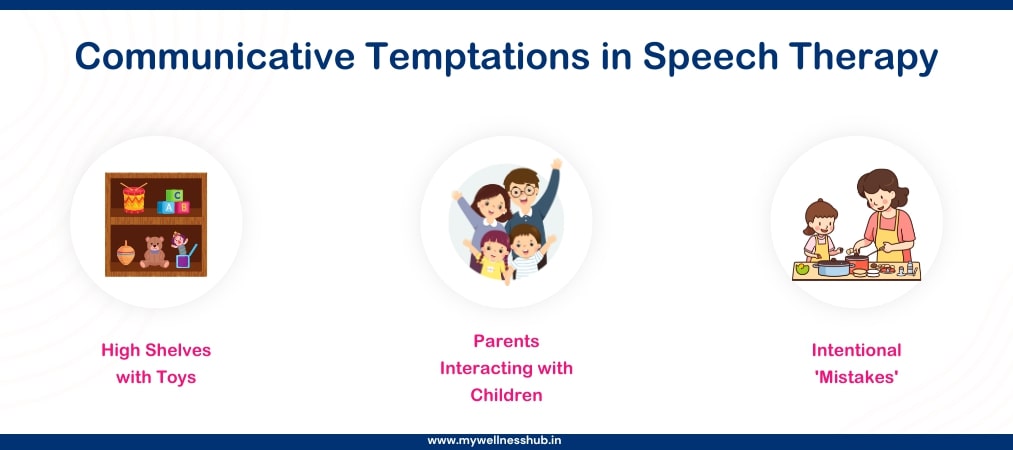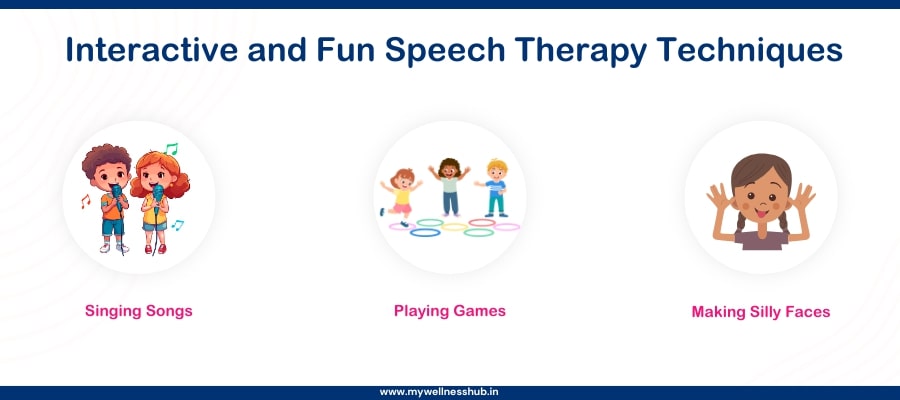Innovative Speech Therapy Strategies to Enhance Your Practice
Last Updated: June 6, 2024
Welcome! If you’re reading this, you’re likely seeking ways to enhance your speech therapy practice with fresh and effective strategies. In the ever-evolving field of speech therapy, staying updated with innovative techniques is crucial. These strategies not only help in achieving better outcomes but also make the therapy process engaging for both the therapist and the clients.
Innovative speech therapy strategies are essential for addressing the diverse needs of individuals, whether they are children with speech delays, adults with aphasia, or anyone in between. By incorporating advanced approaches, modern methods, and cutting-edge techniques, therapists can provide personalized and effective interventions.
Organizing the Environment

Creating an environment that encourages communication is a crucial aspect of implementing innovative speech therapy strategies. The concept of communicative temptations plays a significant role in this. It involves setting up scenarios where the child is naturally motivated to communicate.
Creating Communicative Temptations
One effective technique is placing desired objects just out of reach. For instance, if a child loves a particular toy, place it on a high shelf. This subtle setup prompts the child to request help, initiating a communicative exchange. It’s a simple yet powerful method that encourages children to use their language skills in a natural setting.
Another technique is making intentional ‘mistakes.’ For example, during a familiar routine, intentionally leave out a step or provide the wrong item. This discrepancy encourages the child to correct you, thereby practicing their communication skills. It’s a playful way to engage children and prompt them to use their language abilities actively.
Making Speech Therapy Invisible
One of the most effective and advanced speech therapy approaches is integrating therapy seamlessly into everyday interactions. This technique, often referred to as making speech therapy invisible, ensures that therapy sessions do not feel like formal tests but rather natural and engaging interactions.
Narrating Actions
A simple yet powerful method is narrating your actions throughout the day. This technique involves describing what you’re doing as you do it, providing a rich language environment for the child. For example, if you’re making breakfast, you might say, “I’m cracking the eggs; now I’m pouring the milk.” This continuous exposure to language helps children learn new vocabulary and sentence structures naturally.
Using Repetition
Repetition is another key component. Children often need to hear new words and phrases multiple times before they can use them independently. Repeating phrases during routine activities reinforces learning. For example, every time you get into the car, you might say, “Buckle up! Time to go!” This consistent use of language helps children internalize and eventually use these expressions on their own.
Providing Ample ‘Thinking Time’
Allowing ample ‘thinking time’ is crucial in advanced speech therapy methods. Children often need extra time to process what they hear and to formulate their responses. By pausing after asking a question or making a comment, you give the child the opportunity to think and respond. This patience encourages more thoughtful and confident communication.
Engaging and Natural Interactions
The goal of making speech therapy invisible is to create engaging and natural interactions. Instead of direct instructions or corrections, you engage the child in meaningful conversations. This approach reduces the pressure of feeling tested and enhances the learning experience. It’s about weaving therapy into daily life in a way that feels organic and enjoyable.
Making Speech Therapy Visible
While invisible strategies are essential, making speech therapy visible through structured activities is equally important. These activities help set clear expectations and provide a focused time for communication practice.
Structured Yet Fun Activities
- Reading Together: One of the most effective and enjoyable ways to support speech development is through reading. Choose engaging and age-appropriate books, and make reading a daily habit. As you read, pause to discuss the pictures, ask questions, and encourage the child to predict what happens next. This interaction not only improves vocabulary but also comprehension skills.
- Naming Objects: Turn everyday moments into learning opportunities by naming objects around you. During playtime or household chores, identify and describe items. For example, “This is a spoon. We use it to eat soup.” This constant exposure helps children learn and remember new words.
- Pretend Play: Engage in pretend play activities like cooking, driving, or shopping. Pretend play encourages children to use their imagination and practice language in various contexts. For instance, setting up a play kitchen and cooking a ‘meal’ together can be a fun way to practice naming food items and actions like stirring, cutting, and serving.
Consistency and Setting Expectations
Consistency is key in speech therapy. Designate a specific time each day for ‘talking time’ where you and the child sit together to engage in these structured activities. This consistency helps the child understand that this is a special time for communication and learning.
Setting Expectations: During talking time, make it clear that this is a time for focused communication. Use this period to play simple turn-taking games, read stories, or discuss interesting objects. Keeping this time short, around 5 to 7 minutes, ensures that the child remains engaged and looks forward to these sessions.
Daily Speech Therapy Activities
| Activity | Description | Goal |
|---|---|---|
| Reading Time | Read stories together, ask questions about the story | Improve vocabulary, comprehension, and storytelling skills |
| Naming Objects | Identify and describe everyday items around the house or during outings | Enhance vocabulary, object recognition, and descriptive language |
| Pretend Play | Engage in role-playing games such as cooking, driving, or shopping | Practice language in various contexts, improve social interaction and creativity |
| Talking Time | Designate 5-7 minutes daily for focused communication | Consistent practice of speech skills, encourage turn-taking and dialogue |
Utilizing Visual Supports
Visual supports are powerful tools in speech therapy. They provide clear, consistent cues that help children understand and anticipate what comes next, making the learning process smoother and more effective.
Using Visuals to Support Language Learning
Picture Boards: Picture boards are a fantastic way to support language learning. These boards display images that represent common activities, objects, or routines. By pointing to the pictures, children can communicate their needs and wants even before they have the words for them. For example, a morning routine board might include pictures of brushing teeth, getting dressed, and eating breakfast. This visual guide helps children anticipate what comes next and reduces anxiety.
Family Photo Books: Creating a family photo book can also be incredibly beneficial. Fill the book with pictures of family members, pets, and familiar places. Use it regularly to help children learn and recall names, relationships, and common phrases. This not only aids in language development but also strengthens family bonds.
Timers: Timers can be used to help children understand the concept of time and transitions. For instance, setting a timer for a 5-minute play session or a 10-minute cleanup time helps children anticipate changes in activity. When the timer goes off, they know it’s time to move on to the next task. This reduces frustration and helps establish a routine.
Examples of Visual Aids in Action
Imagine a scenario where a child is struggling with morning routines. By using a picture board, you can show the sequence of activities: wake up, brush teeth, get dressed, and have breakfast. The child can refer to this board throughout the morning, which helps them understand and follow the routine independently.
In another example, during a family gathering, you can use a family photo book to help the child identify and name relatives. This practice not only improves their vocabulary but also makes them feel more connected to their family.
Interactive and Fun Techniques

Incorporating interactive and fun techniques into speech therapy is essential for keeping children engaged and motivated. Using cutting-edge speech therapy techniques and progressive speech therapy strategies can make a significant difference in a child’s learning experience.
Interactive Strategies
Singing Songs: Singing is a fantastic way to make speech therapy enjoyable. Songs with repetitive lyrics and actions, like “The Wheels on the Bus” or “Head, Shoulders, Knees, and Toes,” are particularly effective. These songs help children learn new words and phrases while having fun. The rhythm and melody make it easier for them to remember and reproduce the sounds and words.
Playing Games: Incorporating games into therapy sessions makes learning feel like playtime. Simple games like Simon Says, I Spy, or even board games can be adapted to focus on specific speech goals. For example, in Simon Says, you can give commands that include target sounds or vocabulary, such as “Simon says touch your nose” or “Simon says say ‘sun.’” This method makes practice enjoyable and reduces the pressure on the child.
Using Silly Faces: Making silly faces is a fun way to practice facial movements and expressions, which are crucial for speech development. Encourage children to mimic your expressions or create their own. This activity helps improve muscle control and coordination, which are essential for articulating sounds correctly.
Benefits of Incorporating Fun into Therapy
Incorporating fun into speech therapy has numerous benefits. First and foremost, it helps maintain the child’s interest. When therapy sessions are enjoyable, children are more likely to participate willingly and enthusiastically. This increased participation leads to more opportunities for practice and faster progress.
Moreover, fun activities create a positive association with learning. Children who enjoy their therapy sessions are less likely to see them as a chore. Instead, they look forward to these sessions, which can lead to better cooperation and more consistent practice.
Recognizing and Utilizing Teaching Moments
Recognizing everyday teaching moments is a cornerstone of effective speech therapy. These spontaneous opportunities can make a significant impact on a child’s language development, especially when using effective speech therapy methods for autism or advanced speech therapy approaches for stuttering.
The Importance of Everyday Teaching Moments
Everyday activities offer countless opportunities for teaching and reinforcing language skills. Simple interactions, such as grocery shopping, playing in the park, or cooking dinner, can become valuable lessons in communication. The key is to be mindful and seize these moments to model and encourage language use.
Tips for Modeling Correct Language
Be a Language Model: Children learn by imitating the adults around them. By consistently using correct language, you provide a strong model for your child to follow. If a child says, “Dog run,” you can respond with, “Yes, the dog is running.” This technique, known as recasting, subtly corrects the child’s speech without making them feel self-conscious.
Use Positive Reinforcement: Positive reinforcement is a powerful tool in speech therapy. When a child makes an effort to communicate, acknowledging and praising their attempt encourages them to keep trying. For instance, if a child correctly uses a new word or phrase, offer specific praise like, “Great job saying ‘please’ when you asked for the toy!”
Create a Language-Rich Environment: Surrounding a child with rich and varied language inputs is crucial. Describe your actions, narrate your thoughts, and engage the child in conversations about their interests. For example, while cooking, you might say, “I’m chopping the carrots. Do you want to help me mix the salad?”
Utilizing Teaching Moments
During Playtime: Play is a natural and effective way to practice language skills. While playing with toys, you can introduce new vocabulary and encourage the child to describe their actions. For example, during a game of building blocks, you might ask, “Can you build a tall tower? What color is this block?”
In Daily Routines: Routine activities, such as getting dressed or brushing teeth, are perfect for reinforcing language. Narrate each step and ask questions to engage the child. “We’re putting on your shoes. Which shoe goes on first? Can you show me your left foot?”
On Outings: Trips to the park, zoo, or supermarket provide rich language experiences. Talk about what you see, ask open-ended questions, and encourage the child to express their thoughts. “Look at the ducks! What sound do they make? Can you count how many ducks are swimming?”
Involving Parents and Caregivers
Parents and caregivers play a pivotal role in the success of speech therapy. Their involvement at home can significantly enhance the progress made during therapy sessions, providing a supportive environment for children to practice and develop their language skills.
The Crucial Role of Parents and Caregivers
Parents and caregivers are the child’s first and most consistent teachers. They spend the most time with the child and can incorporate speech therapy techniques into everyday interactions. This continuous support helps reinforce what is learned during therapy sessions and ensures that progress is maintained and built upon.
Practical Strategies for Parents
- Offering Choices: One effective strategy is offering choices throughout the day. Instead of anticipating the child’s needs, present them with options to encourage them to use language to make decisions. For example, ask, “Do you want the red apple or the green apple?” This method not only expands their vocabulary but also gives them a sense of control and independence.
- Using Parallel Talk: Parallel talk involves narrating what the child is doing as they do it. This technique provides a running commentary of the child’s actions, helping them associate words with their activities. For instance, if the child is playing with blocks, you might say, “You’re stacking the blue block on top of the red block.” This ongoing narrative enriches the child’s language environment and enhances their understanding and use of language.
- Modeling Correct Language: When a child makes a grammatical error or mispronounces a word, model the correct form without directly correcting it. For example, if the child says, “I went to the park,” you can respond with, “Yes, you went to the park.” This gentle correction helps the child learn the proper usage without feeling criticized.
- Positive Reinforcement: Celebrate the child’s communication attempts with specific praise. Instead of a general “Good job,” say, “I love how you asked for more juice so clearly!” Positive reinforcement encourages the child to continue making efforts to communicate effectively.
- Reading Together: Incorporate reading into your daily routine. Choose interactive books that encourage participation and discussion. Ask questions about the story and pictures to engage the child and promote conversation. For instance, “What do you think will happen next?” or “Can you find the dog in the picture?”
Parent Involvement Strategies
| Strategy | Implementation Example | Benefit |
|---|---|---|
| Offering Choices | “Do you want the apple or the banana?” | Encourages decision-making and language use |
| Parallel Talk | Narrate the child’s actions: “You’re stacking the blocks.” | Enhances understanding and vocabulary |
| Modeling Language | Correcting by example: “I goed to the park” -> “You went to the park” | Improves grammar naturally |
| Positive Reinforcement | “Great job saying ‘please!'” | Motivates continued communication efforts |
Conclusion
In this article, we’ve explored various innovative speech therapy strategies to enhance your practice. From organizing the environment to using visual supports, making therapy both visible and invisible, incorporating fun and interactive techniques, recognizing teaching moments, and involving parents and caregivers, each approach is designed to make speech therapy more effective and engaging. Innovation in speech therapy is crucial. By adopting advanced approaches and modern methods, you can provide personalized and effective interventions that cater to the unique needs of each individual.
At Wellness Hub, we are dedicated to supporting you with resources and strategies to enhance your speech therapy practice. We believe in empowering both therapists and parents with the tools they need to succeed. Explore more of our resources and support options to continue improving your practice and achieving the best outcomes for your clients. Thank you for joining us on this journey of enhancing speech therapy through innovative strategies. For more tips, techniques, and support, visit our website at Wellness Hub. Together, we can make a difference in the lives of those we serve.
Frequently Asked Questions:
1. What are some innovative speech therapy strategies for children?
Innovative speech therapy strategies for children include creating communicative temptations by organizing the environment, using visual supports like picture boards and family photo books, incorporating fun and interactive techniques such as singing songs and playing games, and involving parents in the therapy process.
2. How can parents support speech therapy at home?
Parents can support speech therapy at home by offering choices to encourage decision-making, using parallel talk to narrate their child’s actions, modeling correct language, providing positive reinforcement, and engaging in daily reading sessions.
3. What are advanced speech therapy approaches for stuttering?
Advanced speech therapy approaches for stuttering include using techniques such as slow and deliberate speech, providing ample ‘thinking time,’ using visual supports to reduce anxiety, and incorporating interactive and fun activities to keep the child engaged.
4. How can visual supports enhance speech therapy?
Visual supports like picture boards, family photo books, and timers can help children anticipate routines, reduce frustration, and provide clear cues that support language learning. These tools make it easier for children to understand and communicate effectively.
5. Why is it important to make speech therapy fun and interactive?
Making speech therapy fun and interactive is important because it helps maintain the child’s interest, encourages participation, and creates a positive association with learning. Engaging activities like games and songs make therapy enjoyable and effective.
6. How can recognizing everyday teaching moments benefit speech therapy?
Recognizing everyday teaching moments allows parents and caregivers to reinforce language skills in natural settings. By modeling correct language and using positive reinforcement during routine activities, children can practice and develop their communication skills in a meaningful way.
7. What are some effective speech therapy methods for autism?
Effective speech therapy methods for autism include using structured activities like naming objects and pretend play, utilizing visual supports to provide clear communication cues, and involving parents in the therapy process to ensure consistent support at home.
8. How can involving parents in speech therapy improve outcomes?
Involving parents in speech therapy improves outcomes by providing continuous reinforcement of therapy techniques at home. Parents can create a language-rich environment, model correct language, and use strategies like offering choices and parallel talk to support their child’s language development.
9. What are the benefits of using interactive strategies in speech therapy?
Interactive strategies in speech therapy, such as singing songs and playing games, help keep children engaged and motivated. These techniques encourage spontaneous language use, improve muscle control and coordination, and make learning enjoyable.
10. How can Wellness Hub support my speech therapy practice?
Wellness Hub offers a variety of resources and strategies to enhance your speech therapy practice. We provide tools and techniques to empower both therapists and parents, ensuring effective and engaging therapy sessions. Visit our website for more tips, techniques, and support.
About the Author:
Anuradha Karanam
Speech-language pathologist (7+ years of experience)
Anuradha Karanam is a skilled speech-language pathologist with over 6 years of experience. Fluent in Tamil, Telugu, Hindi, and English, she specializes in parent counseling, speech sound disorders, fluency assessment, and speech-language evaluations. Anuradha excels at working with children with developmental disorders, offering creative and effective therapy programs. Currently, at Wellness Hub, she holds a BASLP degree and is registered with the RCI (CRR No A85500). Her patience, ambition, and dedication make her a trusted expert in her field.
Connect with Anuradha to learn more about how she can help you or your loved one find their voice.
Book your Free Consultation Today
Parent/Caregiver Info:
Client’s Details:
* Error Message








